I was referring to the headspace in the fermenter that will be already filled with CO2 when you open the valve. This means that any residual level of oxygen in the contraption will be diluted a further 20-30 times or even more. Compared to just opening up the fermentor and dropping in the hops the amount of O2 contamination will be minuscule.
You are using an out of date browser. It may not display this or other websites correctly.
You should upgrade or use an alternative browser.
You should upgrade or use an alternative browser.
No oxygen dry hopping
- Thread starter SEndorf
- Start date

Help Support Homebrew Talk:
This site may earn a commission from merchant affiliate
links, including eBay, Amazon, and others.
Your pressurizing your dry hop tube at 18psi for X amount of times....connected to but closed off from the fermenter by a valve.
Then your relying on the co2 in headspace of the fermenter to further purge the dry hop tube once you open the valve?
Then your relying on the co2 in headspace of the fermenter to further purge the dry hop tube once you open the valve?
- Joined
- Sep 20, 2018
- Messages
- 906
- Reaction score
- 6,476
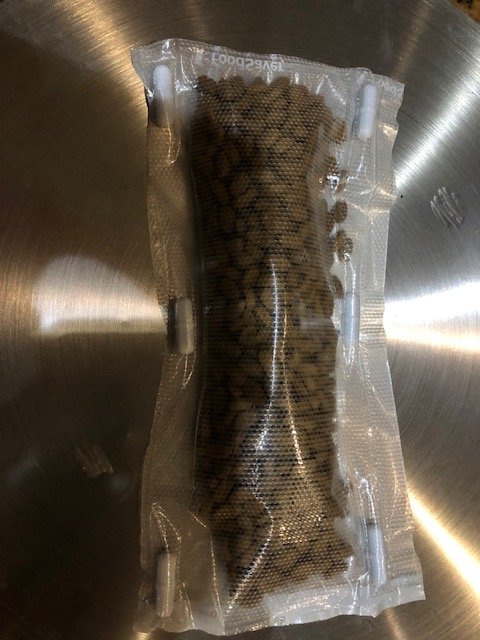

I saw someone do this in a fermentasaurus and all he did was vacuum seal the magnets just to be sure it was safe for contact with the wort. Pulled the outside magnet and dropped hop bag completely in the wort. I'm sure you could use two magnets turn the bag upside down and pull the bottom magnet.
So you guys are genius...I made a vacuum bag hop dropper and just tested it with some dog food. Seems to work reasonably well. I'm going to try it on my next IPA. There's 4 ounces in the pouch. The second pic shows what it looks like after I dragged the 3 magnets on the other side of the lid to the side.
- Joined
- Aug 12, 2013
- Messages
- 2,066
- Reaction score
- 2,729
I've sent an email to Spike asking about having them add a second TC port to the lid....
But it occurs to me I could make something with only the one port that would work. Like this:
View attachment 617114
That would be a perfect solution. I plan on ordering the CF-10 this spring.
- Joined
- Aug 12, 2013
- Messages
- 2,066
- Reaction score
- 2,729
View attachment 617301 View attachment 617302
So you guys are genius...I made a vacuum bag hop dropper and just tested it with some dog food. Seems to work reasonably well. I'm going to try it on my next IPA. There's 4 ounces in the pouch. The second pic shows what it looks like after I dragged the 3 magnets on the other side of the lid to the side.
For some reason I'm not getting this. If using a vac seal bag, how do the hops come in contact with the wort?

$33.99 ($17.00 / Count)
$41.99 ($21.00 / Count)
2 Pack 1 Gallon Large Fermentation Jars with 3 Airlocks and 2 SCREW Lids(100% Airtight Heavy Duty Lid w Silicone) - Wide Mouth Glass Jars w Scale Mark - Pickle Jars for Sauerkraut, Sourdough Starter
Qianfenie Direct

$58.16
HUIZHUGS Brewing Equipment Keg Ball Lock Faucet 30cm Reinforced Silicone Hose Secondary Fermentation Homebrew Kegging Brewing Equipment
xiangshuizhenzhanglingfengshop

$49.95 ($0.08 / Fl Oz)
$52.99 ($0.08 / Fl Oz)
Brewer's Best - 1073 - Home Brew Beer Ingredient Kit (5 gallon), (Blueberry Honey Ale) Golden
Amazon.com

$53.24
1pc Hose Barb/MFL 1.5" Tri Clamp to Ball Lock Post Liquid Gas Homebrew Kegging Fermentation Parts Brewer Hardware SUS304(Liquid Hose Barb)
Guangshui Weilu You Trading Co., Ltd

$176.97
1pc Commercial Keg Manifold 2" Tri Clamp,Ball Lock Tapping Head,Pressure Gauge/Adjustable PRV for Kegging,Fermentation Control
hanhanbaihuoxiaoshoudian

$7.79 ($7.79 / Count)
Craft A Brew - LalBrew Voss™ - Kveik Ale Yeast - For Craft Lagers - Ingredients for Home Brewing - Beer Making Supplies - (1 Pack)
Craft a Brew

$10.99 ($31.16 / Ounce)
Hornindal Kveik Yeast for Homebrewing - Mead, Cider, Wine, Beer - 10g Packet - Saccharomyces Cerevisiae - Sold by Shadowhive.com
Shadowhive

$53.24
1pc Hose Barb/MFL 1.5" Tri Clamp to Ball Lock Post Liquid Gas Homebrew Kegging Fermentation Parts Brewer Hardware SUS304(Liquid MFL)
yunchengshiyanhuqucuichendianzishangwuyouxiangongsi

$22.00 ($623.23 / Ounce)
AMZLMPKNTW Ball Lock Sample Faucet 30cm Reinforced Silicone Hose Secondary Fermentation Homebrew Kegging joyful
无为中南商贸有限公司

$20.94
$29.99
The Brew Your Own Big Book of Clone Recipes: Featuring 300 Homebrew Recipes from Your Favorite Breweries
Amazon.com
The hops aren't in the bag. Just being held up to the lid by the bag and fall in the beer when one side's magnets are removed (hinged).For some reason I'm not getting this. If using a vac seal bag, how do the hops come in contact with the wort?
- Joined
- Aug 12, 2013
- Messages
- 2,066
- Reaction score
- 2,729
The hops aren't in the bag. Just being held up to the lid by the bag and fall in the beer when one side's magnets are removed (hinged).
Are the hops on top of the bag? And drop with the one side magnets removed?
Sorry for the density. And I haven't even had a beer this evening.
But this looks like an interesting method. Just trying to understand.
Exactly. The truth is there is no bagAre the hops on top of the bag? And drop with the one side magnets removed?
Sorry for the density. And I haven't even had a beer this evening.
But this looks like an interesting method. Just trying to understand.
- Joined
- Aug 12, 2013
- Messages
- 2,066
- Reaction score
- 2,729
Exactly. The truth is there is no bag
DING!
Thank you. Sorta sounds like "The Matrix" but I get it......
View attachment 617301 View attachment 617302
So you guys are genius...I made a vacuum bag hop dropper and just tested it with some dog food. Seems to work reasonably well. I'm going to try it on my next IPA. There's 4 ounces in the pouch. The second pic shows what it looks like after I dragged the 3 magnets on the other side of the lid to the side.
You wouldn't even need the other 3 magnets for the "hinge" part. Just tape that edge with some electrical or gaffer tape.
- Joined
- Sep 20, 2018
- Messages
- 906
- Reaction score
- 6,476
I sealed the magnets in just to keep from losing them. I slit open the lid side of the pouch to place the "hops" into the bag and allow gravity to let them drop. MaxStout is right, I really don't need the other 3 magnets, but I plan on Starsanning the crap out of the whole thing and tape doesn't stick well to Starsan...
Gravitysucks
Well-Known Member
Heard back. "We actually do not offer customization to our conicals and cannot add or remove ports to the lids- sorry about that! We need to keep the integrity of the conical as engineering has laid them out to make sure they can withstand pressure and weight. "
Fast response, but too bad. I'm going to have to consider the idea above, with using the existing port.
I also asked Spike about adding an extra port to the CF10 when I ordered mine and got the same answer. Here's an idea that might work ,if you know someone that welds, that wouldn't cause issues with the fermenter lid. You wouldn't need to drill a very big hole as you are only dealing with gas rather than liquid. It would leave the 1.5 TC available for a butterfly valve and a hop container for some sort. You could also have the hole in the 4" TC coil cap threaded for NPT threads and use a threaded TC fitting. Just a thought.

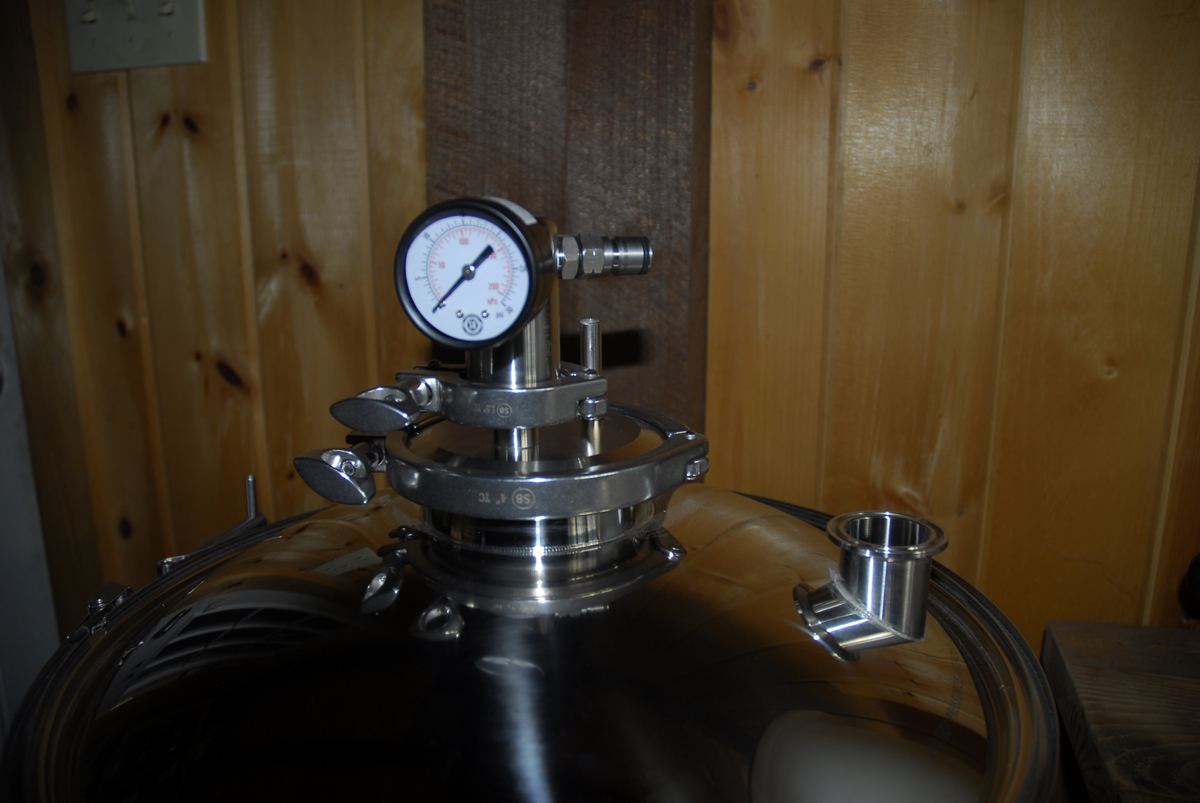
Last edited:
I also asked Spike about adding an extra port to the CF10 when I ordered mine and got the same answer. Here's an idea that might work ,if you know someone that welds, that wouldn't cause issues with the fermenter lid. You wouldn't need to drill a very big hole as you are only dealing with gas rather than liquid. It would leave the 1.5 TC available for a butterfly valve and a hop container for some sort. You could also have the hole in the 4" TC coil cap threaded for NPT threads and use a threaded TC fitting. Just a thought. View attachment 617780 View attachment 617781
Very nice. I've got a local guy who does stainless welding, all I need do is get a TC port and have it welded on there.
OK, here's some further work on this. Ordered a sight glass for 1.5 TC as well as a butterfly valve. Easy to install on the port on the Spike's lid.
I did some testing with this--the only issue is bridging of the hop pellets. Once they dropped as expected, another time I had to work the valve back and forth to get them to drop, another time I had to open the valve and then knock on the side of the sight glass to get them to drop. I had 2 1/2 ounces of hops in there, 3 ounces would fit, 4 might be an issue.
I had concluded I needed a sight glass to ensure the hops had in fact dropped into the wort. I checked and I can crack open the butterfly valve a bit to allow gas to escape out of the manifold, so that should work.
Next time I'm dry hopping in the fermenter, I'm using this. I'll report on it, but it'll be a while yet. I just brewed a beer today which is occupying the fermenter; not sure what the next one will be.
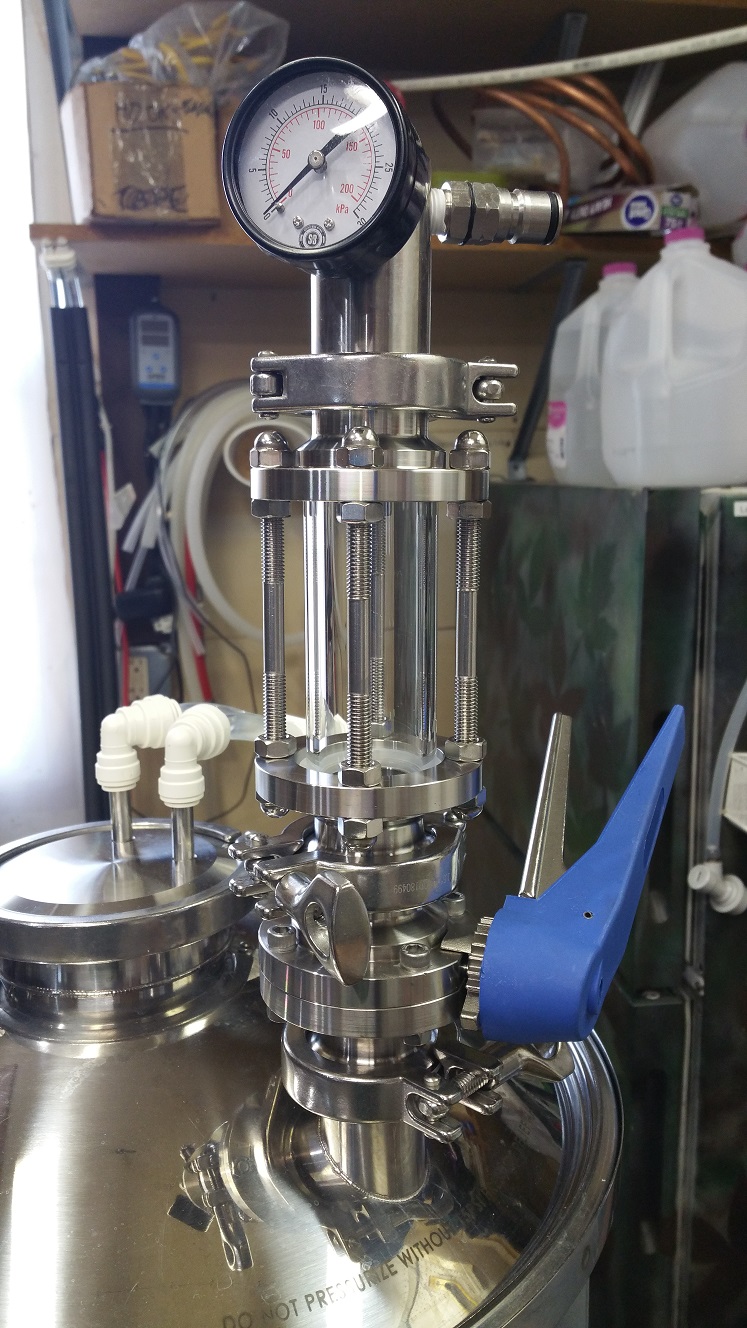


I did some testing with this--the only issue is bridging of the hop pellets. Once they dropped as expected, another time I had to work the valve back and forth to get them to drop, another time I had to open the valve and then knock on the side of the sight glass to get them to drop. I had 2 1/2 ounces of hops in there, 3 ounces would fit, 4 might be an issue.
I had concluded I needed a sight glass to ensure the hops had in fact dropped into the wort. I checked and I can crack open the butterfly valve a bit to allow gas to escape out of the manifold, so that should work.
Next time I'm dry hopping in the fermenter, I'm using this. I'll report on it, but it'll be a while yet. I just brewed a beer today which is occupying the fermenter; not sure what the next one will be.



This is one of the best ideas I’ve seen in a long time. This is why Homebrewers are crucial to the success of the brewing industry. Not sure if breweries implement this already in their process but they will eventually.
Bilsch
Well-Known Member
- Joined
- May 4, 2015
- Messages
- 1,754
- Reaction score
- 1,609
Saw something similar at the Sam Adams brewery in Boston. These three removable charge capsules were in a rack connected to a gas manifold. At the time it was very curious looking indeed and took a while standing there staring to figure out what they were for for.
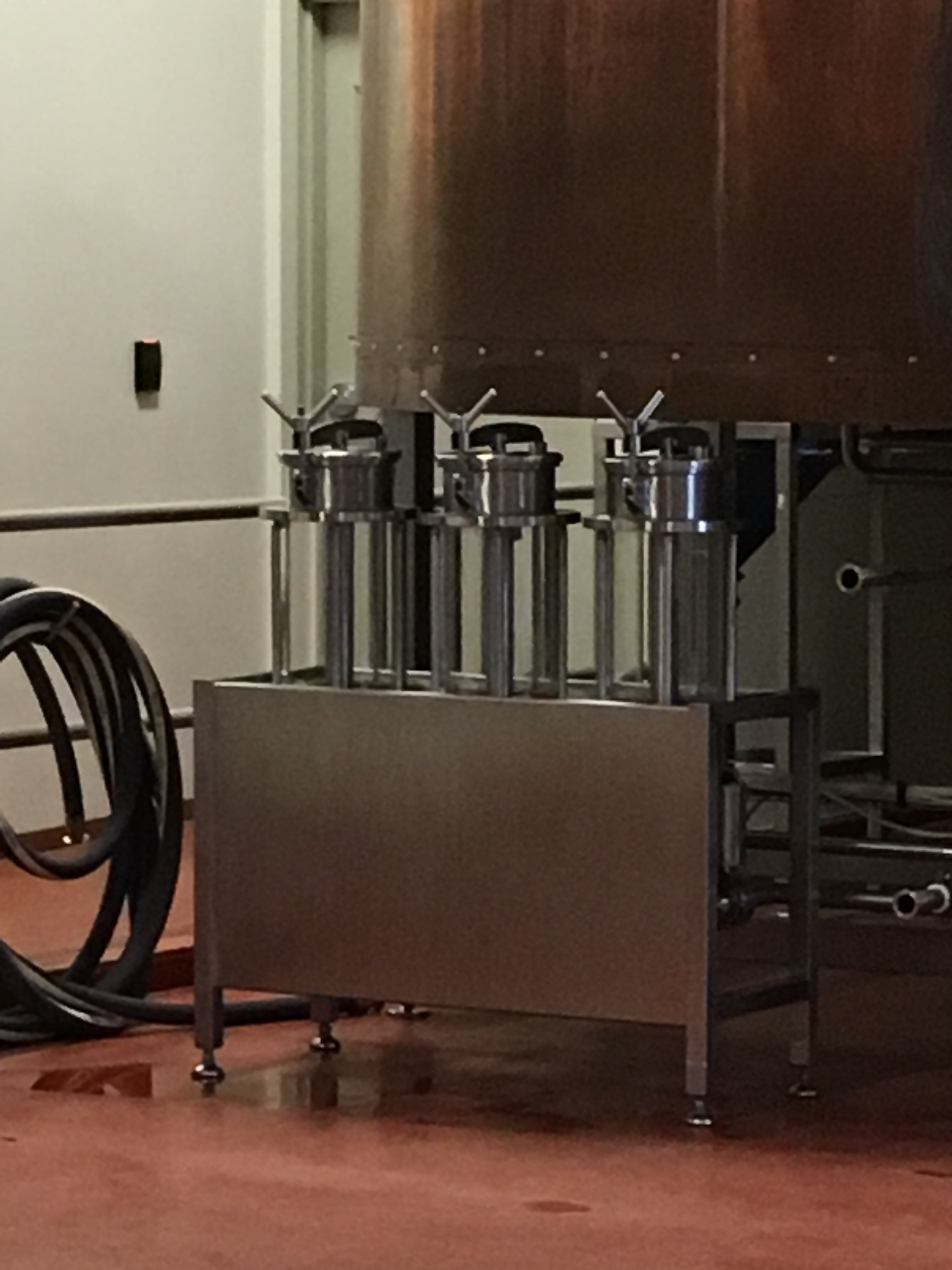

Last edited:
This is one of the best ideas I’ve seen in a long time. This is why Homebrewers are crucial to the success of the brewing industry. Not sure if breweries implement this already in their process but they will eventually.
Many breweries have “CO2 dry hop ports”.
Personally I don’t think they provide a meaningful benefit but I would never remotely blame any brewery for going that route.
OK, here's some further work on this. Ordered a sight glass for 1.5 TC as well as a butterfly valve. Easy to install on the port on the Spike's lid.
I did some testing with this--the only issue is bridging of the hop pellets. Once they dropped as expected, another time I had to work the valve back and forth to get them to drop, another time I had to open the valve and then knock on the side of the sight glass to get them to drop. I had 2 1/2 ounces of hops in there, 3 ounces would fit, 4 might be an issue.
I had concluded I needed a sight glass to ensure the hops had in fact dropped into the wort. I checked and I can crack open the butterfly valve a bit to allow gas to escape out of the manifold, so that should work.
Next time I'm dry hopping in the fermenter, I'm using this. I'll report on it, but it'll be a while yet. I just brewed a beer today which is occupying the fermenter; not sure what the next one will be.
View attachment 618335 View attachment 618334 View attachment 618333
Crush the hops while their still in the bag or put them in a bag and crush them.
Use a hammer and turn them into powder...this may prevent them from binding up.
Last edited:
- Joined
- Aug 12, 2013
- Messages
- 2,066
- Reaction score
- 2,729
Next time I'm dry hopping in the fermenter, I'm using this. I'll report on it, but it'll be a while yet. I just brewed a beer today which is occupying the fermenter; not sure what the next one will be.
Looking forward to your results!
I'm still figuring out my order list from spike for the CF-10
I believe NorCal Homebrew shop sales yeast brinks that can be used to dry hop.
https://www.norcalbrewingsolutions.com/store/Yeast-Brink-1.5-Inch-TC-2-Inch-Sight-Glass.html
https://www.norcalbrewingsolutions.com/store/Yeast-Brink-1.5-Inch-TC-2-Inch-Sight-Glass.html
I'm thinking also that hitting this device with a bit of high pressure CO2 might shoot them down into the wort.
Yep, here is a video demo of that.I'm thinking also that hitting this device with a bit of high pressure CO2 might shoot them down into the wort.
Yep, here is a video demo of that.
The thing I have a problem with is that your pressurizing a glass jar not rated for pressure.
It has been pointed out to me that the lid ring will pop off first before the glass breaks (between 12-15 psi)....as tested by a fellow home brewer. But I’m not comfortable with that.
It also takes about 10-12 purge vent cycles to purge any vessel to acceptable low o2 concentrations and hops of o2...and that’s at 30 psi.
Carolina_Matt
Well-Known Member
- Joined
- Jan 24, 2018
- Messages
- 492
- Reaction score
- 261
I've just gotten into closed transfers to prevent oxygen - my last batch was the first time I tried it. I have a beer fermenting right now with 3 ounces of dry hops. In the past, I used to just open the lid and pour it in - but that's obviously not ideal. How much oxygen would I be adding if I did the following?
Find a funnel with a 1/2" opening (the same as the center part of a 3-piece airlock). Put that over the airlock (after taking off the lid of the airlock, and the upside down piece in the middle), pour the hops through that, then close the airlock again. Would that help prevent oxygen, or would that be about as bad as opening the lid?
Find a funnel with a 1/2" opening (the same as the center part of a 3-piece airlock). Put that over the airlock (after taking off the lid of the airlock, and the upside down piece in the middle), pour the hops through that, then close the airlock again. Would that help prevent oxygen, or would that be about as bad as opening the lid?
In the past, I used to just open the lid and pour it in - but that's obviously not ideal.
I’m honestly curious whether it is or not.
I skimmed the thread so if someone posted it and I missed it, I honestly apologize... but I’m curious if anyone has done a side-by-side... or more importantly done a side-by-side DO test.
I own a small micro and we just dump in the hop port.
Intuitively... when you dump hops into a fermenter that is already full of CO2, they’re going to form nucleation points and off-gas even more CO2.
I’m not remotely an expert but since CO2 is heavier than oxygen, I don’t understand where the oxygen introduction is really coming from in a meaningful way.
Like I was saying, we just dump in through the hop port and we’ve had our cans pierced and tested for dissolved oxygen and they come back extremely low every time.
Again... not at all an expert. Honestly curious if there is any analytical data on it one way or the other.
DO measurement has to happen more or less in real time. It gets taken up pretty quickly. Measurements in cans won't give you a good indication of levels after dry hopping.I’m honestly curious whether it is or not.
I skimmed the thread so if someone posted it and I missed it, I honestly apologize... but I’m curious if anyone has done a side-by-side... or more importantly done a side-by-side DO test.
I own a small micro and we just dump in the hop port.
Intuitively... when you dump hops into a fermenter that is already full of CO2, they’re going to form nucleation points and off-gas even more CO2.
I’m not remotely an expert but since CO2 is heavier than oxygen, I don’t understand where the oxygen introduction is really coming from in a meaningful way.
Like I was saying, we just dump in through the hop port and we’ve had our cans pierced and tested for dissolved oxygen and they come back extremely low every time.
Again... not at all an expert. Honestly curious if there is any analytical data on it one way or the other.
As to your direct point, nucleation certainly helps. Dunno if you're at a scale to risk a full on geyser without a sacrificial charge, but that shows just how much CO2 can be released. Still, if I'm going through the port there's always a positive CO2 flow in before the port is opened until after it's closed. Possibly no oxygen < definitely no oxygen.
(Of course that first charge to avoid the geyser means no nucleation for the actual dry hop.
But geysers are bad. And they go viral)
But geysers are bad. And they go viral)

Parrothead1
Active Member
- Joined
- Mar 25, 2013
- Messages
- 30
- Reaction score
- 19
Suspend a bag inside using monofiliment passed through a small hole in the cap with the other end taped down to hold in place. A little keg lube to seal around the hole and keep out air. When it's time to dry hop, snip the line and let it drop. Tape over the hole.
View attachment 616589
Nice idea but I would be worried about the krausen hitting the bag. If the hops get wet you could lose oils too early and not have much left when you finally add them.
Similar threads
- Replies
- 2
- Views
- 524
- Replies
- 34
- Views
- 2K
- Replies
- 9
- Views
- 1K
- Replies
- 102
- Views
- 8K

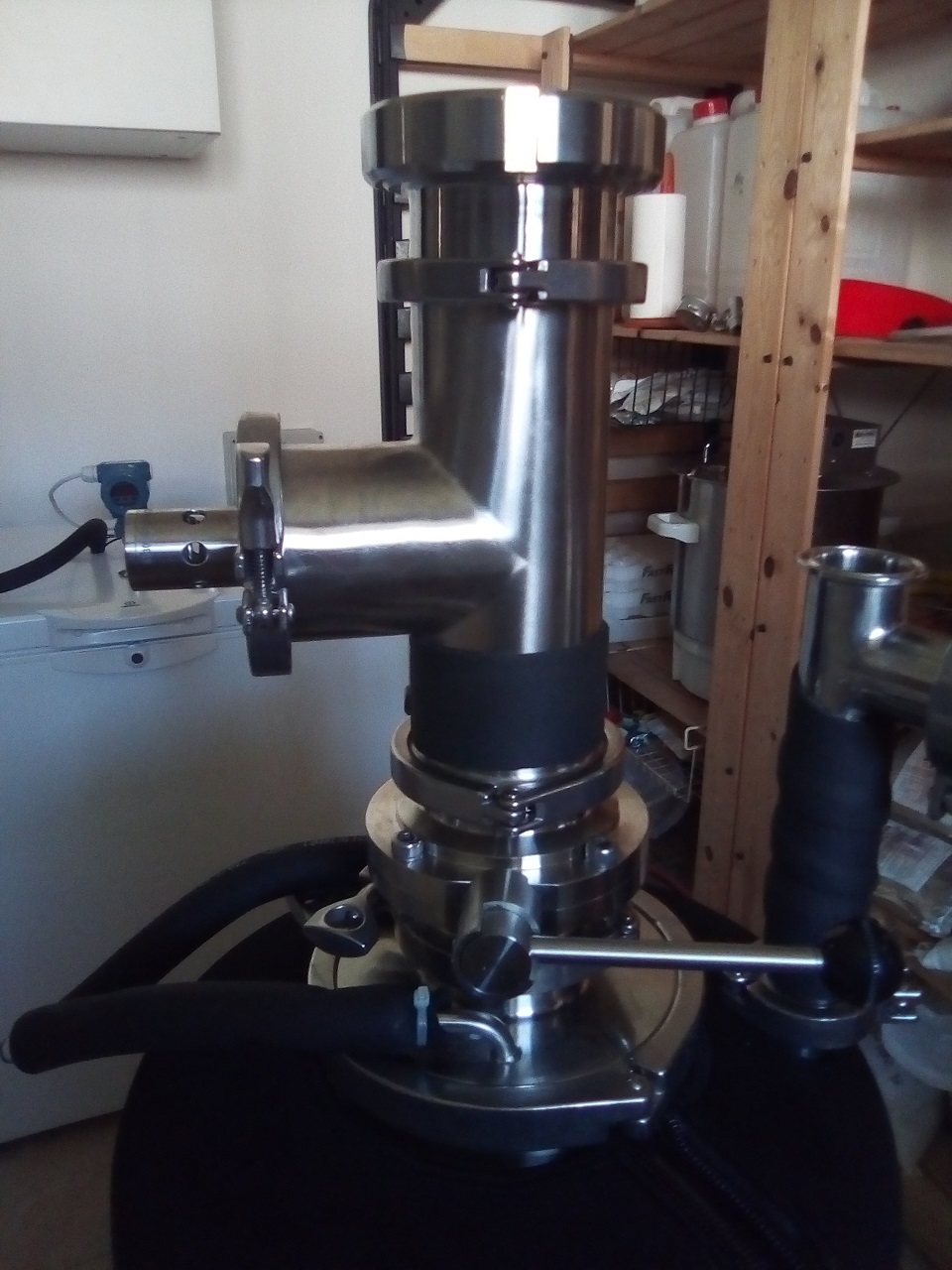









![Craft A Brew - Safale S-04 Dry Yeast - Fermentis - English Ale Dry Yeast - For English and American Ales and Hard Apple Ciders - Ingredients for Home Brewing - Beer Making Supplies - [1 Pack]](https://m.media-amazon.com/images/I/41fVGNh6JfL._SL500_.jpg)



































